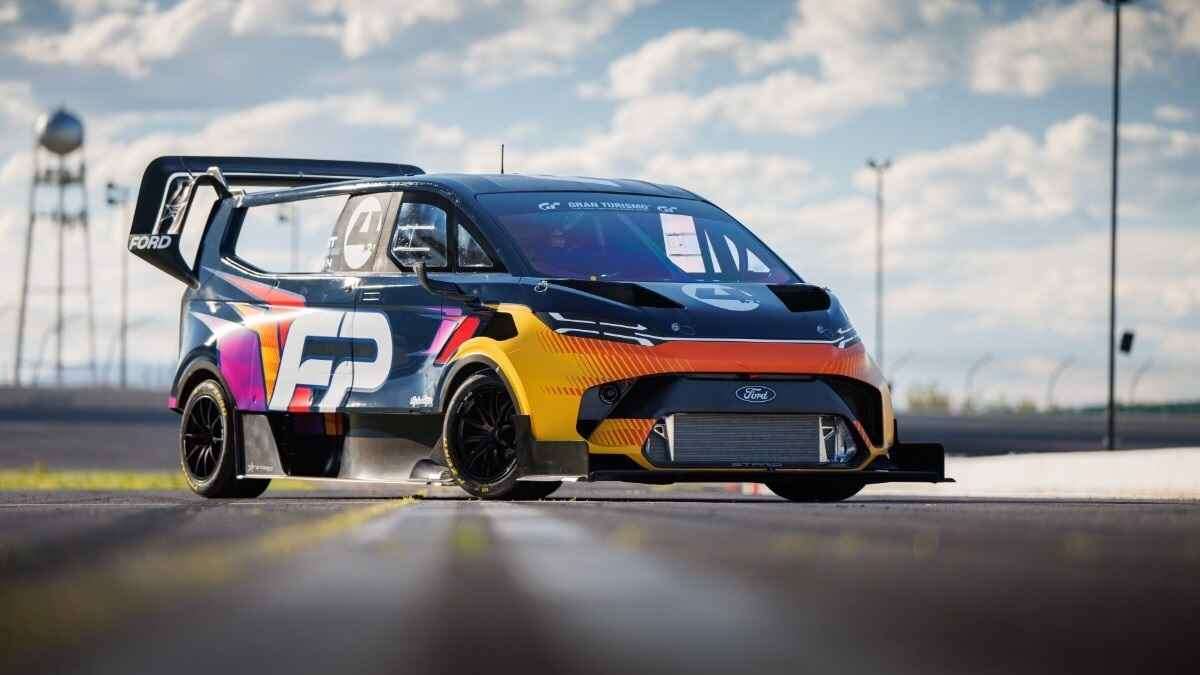Ford Performance brought something unusual to the 101st running of The Broadmoor Pikes Peak International Hill Climb this past weekend. It was a rather unusual van developed by Gran Turismo. An electrifying entry, the all-new, improved Ford SuperVan 4.2 features a groundbreaking design, advanced technologies, and unique features that optimized its performance for the challenging hill climb. Ford Has Long History In Hill Climb With a history dating back to the entry of a Ford Model T in the inaugural hill climb in 1916, Ford vehicles have consistently left their mark on the iconic Pikes Peak International Hill Climb. This year, motorsports legend Romain Dumas took the wheel of SuperVan 4.2. It was his eighth appearance at the event. His vast experience and exceptional skill set made him the perfect choice to continue Ford’s rich tradition at America’s most renowned mountain race. Supply Chain Issues Were More Than Just Parts Ford Performance and STARD Advanced Research and Development experts joined forces again to create SuperVan 4.2. The SuperVan was explicitly designed to conquer America’s mountains and showcase the extreme limits of electric power. As the automotive industry charges forward into an electrified future, SuperVan 4.2 takes center stage, demonstrating the immense potential of electric vehicles in motorsports. With its revised aerodynamics and specific hill climb powertrain, the SuperVan 4.2 is set to electrify the legendary Pikes Peak International Hill Climb. “Together with our STARD partners, we have built the E-Transit SuperVan 4.2 to be a truly competitive machine focused on getting to the top of the mountain quickly. The Pikes Peak Hill Climb presents the perfect opportunity to showcase Ford’s electric vehicle technology and bring light to EV Performance,” said Mark Rushbrook, Global Director, Ford Performance Motorsports. The SuperVan 4.2, refined from the SuperVan 4, has undergone a complete redesign of aerodynamics specifically engineered to cut through the high-altitude air of the Pikes Peak atmosphere while increasing downforce – over 4,400 pounds at 150 miles per hour. Key aero features include a lightweight carbon fiber rear spoiler and front splitter, both assisting SuperVan 4.2 to stay planted on the mountain’s winding roads. The chassis of SuperVan 4.2 also underwent a weight reduction to improve overall balance and provide agility through the twist of the mountain roads. Powertrain Refinements Help Output Refinements have also been made to the powertrain. By reducing the number of STARD UHP six-phase motors from four to three and utilizing STARD’s Ultra High-Performance Li-Polymer NMC pouch cells, the van achieves an optimal power-to-weight ratio while retaining its all-wheel-drive system with one motor powering the front and two in the rear. With over 1,050 kW (1,400 horsepower) combined discharge power, the SuperVan 4.2 can unleash its full potential while leveraging the battery's new 600 kW regeneration performance for optimal energy utilization. There Is More To AM Radio Than Statid For EVa In the run-up to this weekend’s hill climb classic, Mike Norton, WRC program supervisor of motorsports regulations and homologation, Ford Performance, said, “The Ford Performance and STARD teams have been hard at work optimizing SuperVan 4.2 for the Pikes Peak Hill Climb. From the aero to the revised electric powertrain, I believe our run times on the mountain will be worth tuning in for.” Diving into the chassis, Ford Performance and STARD equipped SuperVan 4.2 with a revised regenerative braking system with carbon ceramic brake discs; magnesium forged wheels wrapped in Pirelli P Zero race tires, upgraded driveshafts, a Perspex windscreen, and a minimalist race interior to remove any weight that is not mandatory to SuperVan 4.2 completing its best possible time on the mountain. Ford Motor Photo Marc Stern has been an automotive writer since 1971 when an otherwise normal news editor said, “You're our new car editor," and dumped about 27 pounds of auto stuff on my desk. I was in heaven as I have been a gearhead from my early days. As a teen, I spent many misspent hours hanging out at gas stations (a big thing in my youth) and working on cars. From there on, it was a straight line to my first column for the paper "You Auto Know," an enterprise I handled faithfully for 32 years. Only a few people know that I also handled computer documentation for most of my earnings while writing YAN. My best writing, though, was always in cars. My work has appeared in Popular Mechanics, Mechanix Illustrated, AutoWeek, SuperStock, Trailer Life, Old Cars Weekly, Special Interest Autos, etc. You can follow me on: Twitter or
SuperVan 4.2 Van Continues Tradition As It Takes On Pikes Peak
Today's car news
| |
More Details On 9 Small SUVs That Fail New IIHS Test And One That Excels - by Denis Flierl |
| |
Life With The Subaru Solterra After 35,000 Miles, Owner Says It May Not Fit Your Lifestyle - by Denis Flierl |
| |
My 2022 Toyota Tundra Is Going Back To Dealership For 3rd Motor Going In At 49,000 Miles - by Armen Hareyan |
| |
Tesla May Have A Hatchback In The Works, Similar To A Honda Fit - by Jeremy Johnson |
| |
Ram Strengthens Off-Road Lineup With New 2025 Rebel X - by Mary Conway |





